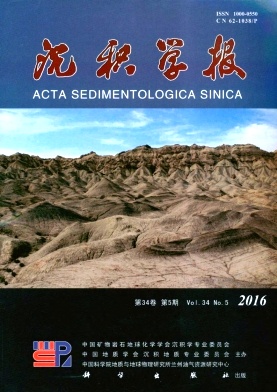Geochemical Characteristics of Sediments in the Eastern Bohai Sea since Late Pleistocene
doi: 10.14027/j.cnki.cjxb.2016.05.008
- Received Date: 2015-11-27
- Rev Recd Date: 2016-02-03
- Publish Date: 2016-10-10
-
Key words:
- eastern Bohai Sea /
- geochemistry /
- sediment /
- Late Pleistocene
Abstract: 157 sediment samples were collected from Core DLC70-1 in the eastern Bohai Sea.These samples were analyzed for major and trace elements, grain size parameters, C14 dating and OSL dating with the purpose of studying the geochemical characteristics of elements and controlling factors in the eastern Bohai Sea since Late Pleistocene.The results show that sediment sources and depositional environments of the study area remained relatively stable since Late Pleistocene. According to the changing law of element contents, the sediments from Core DLC70-1 can be divided into six layers, reflecting the fluctuation of sea level and the change of sediment sources in Bohai Sea since the late of the last interglacial cycle (warm period).The Al2O3, MgO, TFe2O3, MnO, TiO2, Cu, Zn, Pb, Cr and Rb elements were positively correlated with the fine-grained sediments, and SiO2, Na2O was positively correlated with coarse-grained sediments. There was no significant positive or negative correlation between K2O, Sr and Ba distributions and grain size of sediment. Three groups representing respectively by Mg, Sr and Ba can be derived from R-model factor analysis, corresponding to the impact of the input of fine-grained terrigenous sediments and Yellow River sediment, Haihe River sediments, Luanhe River sediments. Combined with scatter diagram of Ba/Al2O3 vs. Sr/Al2O3, MgO/Al2O3 vs. K2O/Al2O3 were drawn to reveal the source of sediments from Core DLC70-1. The results suggest that the material sources of the core mainly come from the Yellow River, but the sediments in the upper-middle parts of the core were apparently influenced by materials from the Luanhe River and Haihe River.
| Citation: | LAN XianHong, QIN YaChao, WANG ZhongBo, CHEN XiaoHui, MI BeiBei, HUANG Long. Geochemical Characteristics of Sediments in the Eastern Bohai Sea since Late Pleistocene[J]. Acta Sedimentologica Sinica, 2016, 34(5): 892-901. doi: 10.14027/j.cnki.cjxb.2016.05.008 |






 DownLoad:
DownLoad: